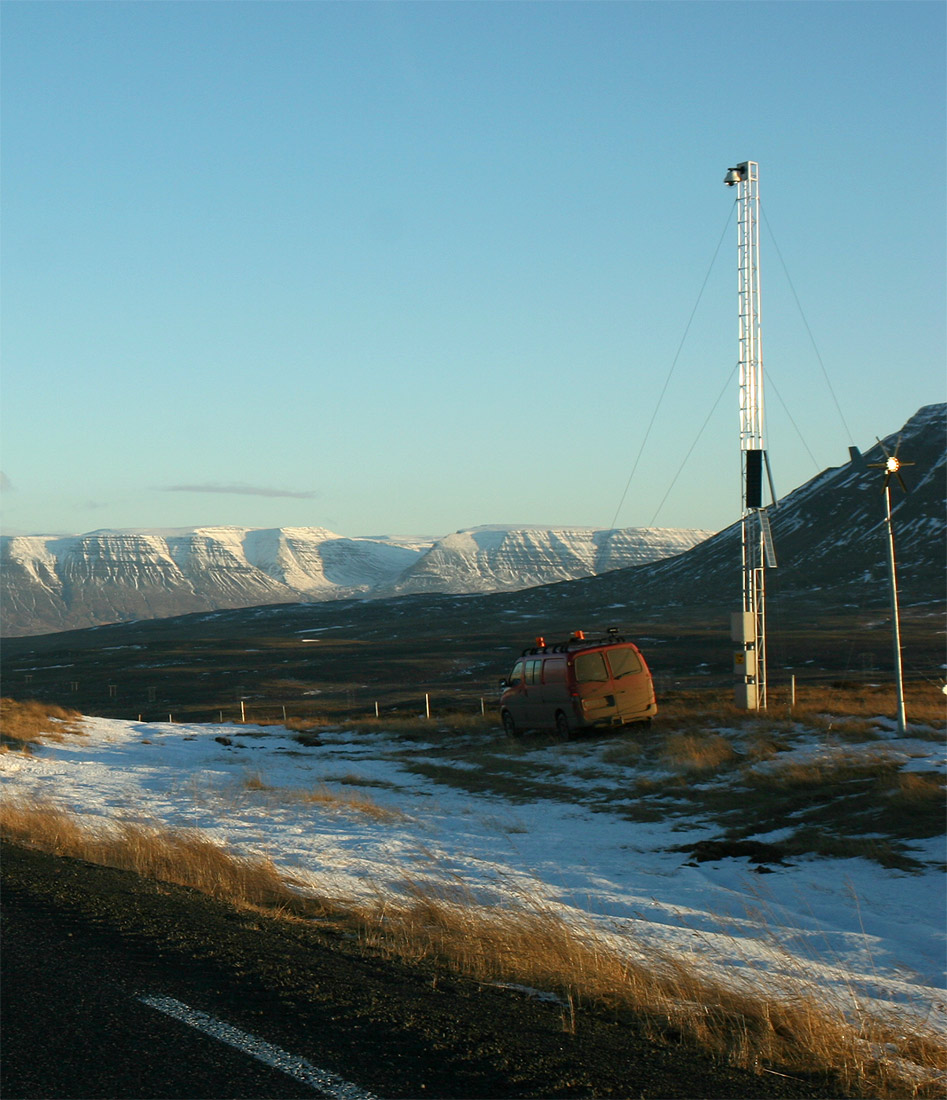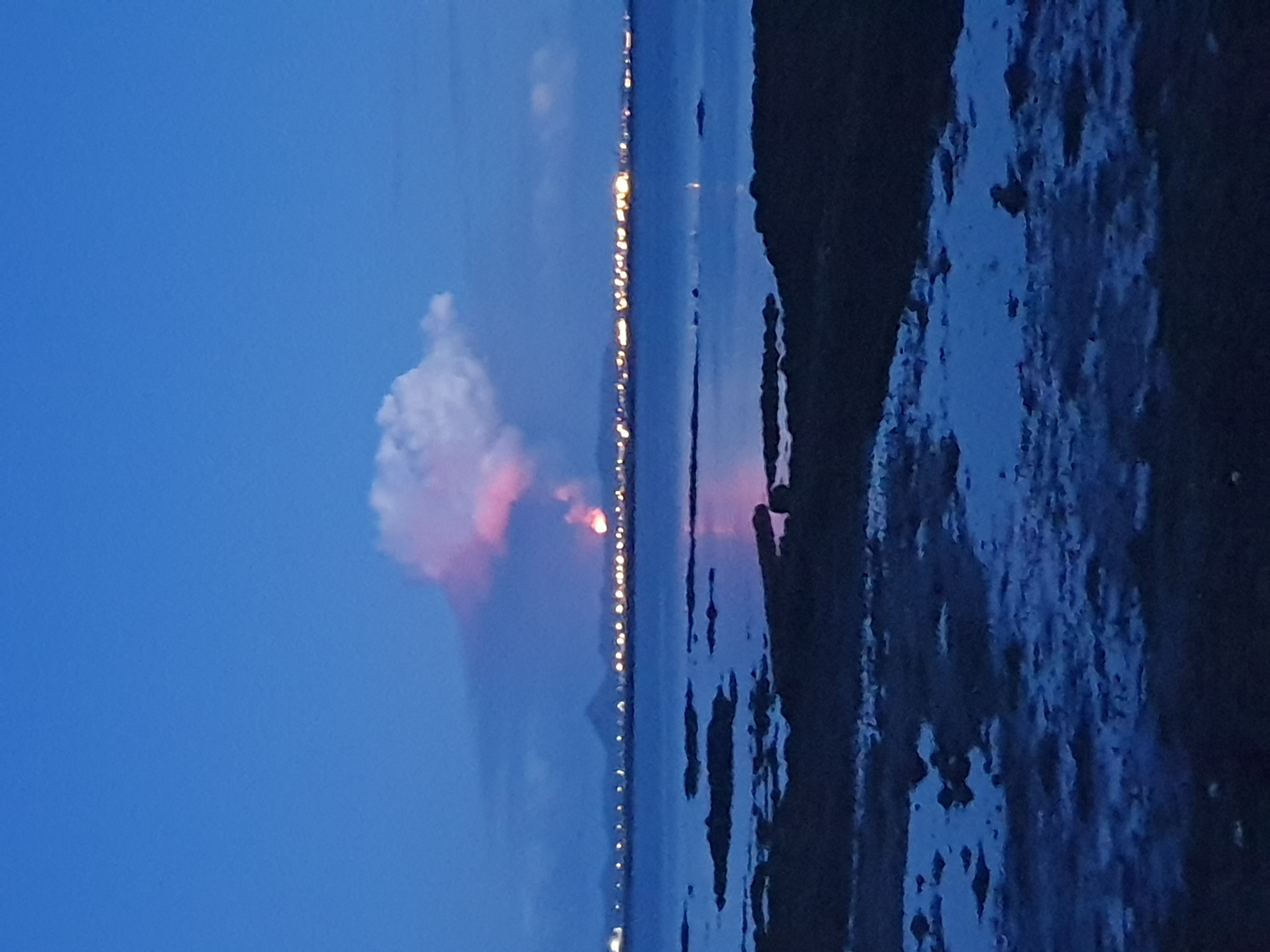|
2023–2024 Sundhnúkur Eruptions
The 2023–2024 Sundhnúkur eruptions ( is, Eldgosin við Sundhnúksgíga 2023–2024) are an ongoing series of volcanic eruptions in the Southern Peninsula (Iceland), Reykjanes Peninsula, near the town of Grindavík, Iceland. , there have been six eruptions between December 2023 and August 2024, following an intense series of earthquakes. Although localised, the seismic and volcanic activity have caused significant disruption across the western part of the peninsula, especially for the town of Grindavík. The eruptions were preceded by an intense earthquake swarm in the Eldvörp–Svartsengi, Eldvörp–Svartsengi volcanic system that began on 24 October 2023, caused by a Igneous intrusion, magmatic intrusion underneath the area. The frequency and intensity of the earthquakes dramatically increased on 10 November 2023, with around 20,000 tremors recorded by that time, the largest of which exceeded magnitude 5.3. An evacuation was ordered in Grindavík, and large-scale subsidence ... [...More Info...] [...Related Items...] OR: [Wikipedia] [Google] [Baidu] |
Icelandic Meteorological Office
Icelandic Meteorological Office (IMO; is, Veðurstofa Íslands) is Iceland's national weather service and as such a government agency under the Ministry of Environment and Natural Resources. It is also active in volcano monitoring, esp. volcano seismology, and, together with other institutions, responsible for civil protection in IcelandMission. About the Icelandic Meteorological Office. (28.5.2010) Retrieved 18 August 2020. Aims and functions "The research focus of IMO is on and ,[...More Info...] [...Related Items...] OR: [Wikipedia] [Google] [Baidu] |
Fagradalsfjall
Fagradalsfjall () is a tuya volcano formed in the Last Glacial Period on the Reykjanes Peninsula, around from Reykjavík, Iceland. Fagradalsfjall is also the name for the wider volcanic system covering an area wide and long between the Svartsengi and Krýsuvík systems. The highest summit in this area is Langhóll (). No volcanic eruption had occurred for 815 years on the Reykjanes Peninsula until 19 March 2021 when a fissure vent appeared in Geldingadalir to the south of Fagradalsfjall mountain. The 2021 eruption was effusive and continued emitting fresh lava sporadically until 18 September 2021. The eruption was unique among the volcanoes monitored in Iceland so far and it has been suggested that it may develop into a shield volcano. Due to its relative ease of access from Reykjavík, the volcano has become an attraction for local people and foreign tourists. Another eruption, very similar to the 2021 eruption, began on 3 August 2022. It is still considered ongoing ... [...More Info...] [...Related Items...] OR: [Wikipedia] [Google] [Baidu] |
Uppsala University
Uppsala University ( sv, Uppsala universitet) is a public university, public research university in Uppsala, Sweden. Founded in 1477, it is the List of universities in Sweden, oldest university in Sweden and the Nordic countries still in operation. The university rose to significance during the rise of Swedish Empire, Sweden as a great power at the end of the 16th century and was then given a relative financial stability with a large donation from King Gustavus Adolphus of Sweden, Gustavus Adolphus in the early 17th century. Uppsala also has an important historical place in Swedish national culture, identity and for the Swedish establishment: in historiography, literature, politics, and music. Many aspects of Swedish academic culture in general, such as the white student cap, originated in Uppsala. It shares some peculiarities, such as the student nation system, with Lund University and the University of Helsinki. Uppsala belongs to the Coimbra Group of European universities a ... [...More Info...] [...Related Items...] OR: [Wikipedia] [Google] [Baidu] |
Carbon-14 Dating
Radiocarbon dating (also referred to as carbon dating or carbon-14 dating) is a method for determining the age of an object containing organic material by using the properties of radiocarbon, a radioactive isotope of carbon. The method was developed in the late 1940s at the University of Chicago by Willard Libby. It is based on the fact that radiocarbon () is constantly being created in the Earth's atmosphere by the interaction of cosmic rays with atmospheric nitrogen. The resulting combines with atmospheric oxygen to form radioactive carbon dioxide, which is incorporated into plants by photosynthesis; animals then acquire by eating the plants. When the animal or plant dies, it stops exchanging carbon with its environment, and thereafter the amount of it contains begins to decrease as the undergoes radioactive decay. Measuring the amount of in a sample from a dead plant or animal, such as a piece of wood or a fragment of bone, provides information that can be used to calcu ... [...More Info...] [...Related Items...] OR: [Wikipedia] [Google] [Baidu] |
Carbon-14
Carbon-14, C-14, or radiocarbon, is a radioactive isotope of carbon with an atomic nucleus containing 6 protons and 8 neutrons. Its presence in organic materials is the basis of the radiocarbon dating method pioneered by Willard Libby and colleagues (1949) to date archaeological, geological and hydrogeological samples. Carbon-14 was discovered on February 27, 1940, by Martin Kamen and Sam Ruben at the University of California Radiation Laboratory in Berkeley, California. Its existence had been suggested by Franz N. D. Kurie, Franz Kurie in 1934. There are three naturally occurring isotopes of carbon on Earth: carbon-12 (), which makes up 99% of all carbon on Earth; carbon-13 (), which makes up 1%; and carbon-14 (), which occurs in trace amounts, making up about 1 or 1.5 atoms per 1012 atoms of carbon in the atmosphere. Carbon-12 and carbon-13 are both stable, while carbon-14 is unstable and has a half-life of 5,730 ± 40 years. Carbon-14 decays into nitrogen-14 () through bet ... [...More Info...] [...Related Items...] OR: [Wikipedia] [Google] [Baidu] |
Radiocarbon Year
Radiocarbon dating measurements produce ages in "radiocarbon years", which must be converted to calendar ages by a process called calibration. Calibration is needed because the atmospheric / ratio, which is a key element in calculating radiocarbon ages, has not been constant historically.Taylor (1987), p. 133. Willard Libby, the inventor of radiocarbon dating, pointed out as early as 1955 the possibility that the ratio might have varied over time. Discrepancies began to be noted between measured ages and known historical dates for artefacts, and it became clear that a correction would need to be applied to radiocarbon ages to obtain calendar dates. Uncalibrated dates may be stated as "radiocarbon years ago", abbreviated "ya". The term Before Present (BP) is established for reporting dates derived from radiocarbon analysis, where "present" is 1950. Uncalibrated dates are stated as "uncal BP", and ''calibrated'' (corrected) dates as "cal BP". Used alone, the term BP is am ... [...More Info...] [...Related Items...] OR: [Wikipedia] [Google] [Baidu] |
Reykjanes Volcanic Systems
Reykjanes () is a small headland on the southwestern tip of the Reykjanes Peninsula in Iceland, giving the main peninsula its name. The region is about from Iceland's international airport. As the name means "smoking peninsula" connected to volcanic activity, there are also other peninsulas by this name in Iceland, e.g. the peninsula of Reykjanes in Ísafjarðardjúp Ísafjarðardjúp () is a large fjord in the Westfjords region of Iceland. Its name translates to ''Depth of the fjord of sea ice''. Ísafjörður, capital of the Westfjords region, is situated close to the mouth of Ísafjarðardjúp in Skutul .... References External links Catalogue of Icelandic Volcanoes - Reykjanes Headlands of Iceland Black sand beaches {{Iceland-geo-stub ... [...More Info...] [...Related Items...] OR: [Wikipedia] [Google] [Baidu] |
Landmark
A landmark is a recognizable natural or artificial feature used for navigation, a feature that stands out from its near environment and is often visible from long distances. In modern use, the term can also be applied to smaller structures or features, that have become local or national symbols. Etymology In old English the word ''landmearc'' (from ''land'' + ''mearc'' (mark)) was used to describe a boundary marker, an "object set up to mark the boundaries of a kingdom, estate, etc.". Starting from approx. 1560, this understanding of landmark was replaced by a more general one. A landmark became a "conspicuous object in a landscape". A ''landmark'' literally meant a geographic feature used by explorers and others to find their way back or through an area. For example, the Table Mountain near Cape Town, South Africa is used as the landmark to help sailors to navigate around southern tip of Africa during the Age of Exploration. Artificial structures are also sometimes built to a ... [...More Info...] [...Related Items...] OR: [Wikipedia] [Google] [Baidu] |
Skerry
A skerry is a small rocky island, or islet, usually too small for human habitation. It may simply be a rocky reef. A skerry can also be called a low sea stack. A skerry may have vegetative life such as moss and small, hardy grasses. They are often used as resting places by animals such as seals and birds. Etymology The term ''skerry'' is derived from the Old Norse ', which means a rock in the sea (which in turn derives from the Proto-Indo-European root *''sker''-, "cut", in the sense of a rock cut off from the land). The Old Norse term ' was brought into the English language via the Scots language word spelled or . It is a cognate of the Scandinavian languages' words for ''skerry'' – Icelandic, fo, sker, da, skær, sv, skär, no, skjær / skjer, found also in german: Schäre, fi, kari, et, skäär, lv, šēra, lt, Šcheras and russian: шхеры (). In Scottish Gaelic, it appears as ', e.g. Sula Sgeir, in Irish as '','' in Welsh as '','' and in Manx as ''.'' ... [...More Info...] [...Related Items...] OR: [Wikipedia] [Google] [Baidu] |
Sundhnúkur
Sundhnúkur () is a volcanic hill, within its associated Sundhnúksgígar crater row and volcanic fissures ( ) in the Svartsengi volcanic system, part of the Reykjanes Peninsula rift zone of Iceland. It is the location of the 2023–2024 Sundhnúkur eruptions. Geology The region has basalt lava shields with the larger ones being tholeiitic and smaller ones being picritic or tholeiitic. The hills are hyaloclastite table mountains or ridges and pillow lava mounds. The previous lava eruption from the Sundhnúkur crater row has been dated at , and was of basaltic aā type. The lava field that erupted prior to 2023 extends north-east from Grindavík in the south with the fissures and Sundhnúksgígar crater row extending at strike of 35°. This takes the fissure system past the older mountains of Hagafell to its east and Svartsengisfell to its west. The crater row is usually now classified as part of the Eldvörp–Svartsengi or Svartsengi volcanic system which is pa ... [...More Info...] [...Related Items...] OR: [Wikipedia] [Google] [Baidu] |
Morgunblaðið
''Morgunblaðið'' (, ''The Morning Paper'') is an Icelandic newspaper. ''Morgunblaðið''s website, mbl.is, is the most popular website in Iceland. History ''Morgunblaðið'' was founded by Vilhjálmur Finsen and Ólafur Björnsson, brother of Iceland's first president. The first issue, only eight pages long, was published on 2 November 1913. On 25 February 1964, the paper first printed a caricature by Sigmúnd Jóhannsson which featured the first landings on Surtsey. He became a permanent cartoonist for ''Morgunblaðið'' in 1975 and worked there until October 2008. In a controversial decision, the owners of the paper decided in September 2009 to appoint Davíð Oddsson, a member of the Independence Party, Iceland's longest-serving Prime Minister and former Governor of the Central Bank, as one of the two editors of the paper. In May 2010, Helgi Sigurðsson was hired as the papers cartoonist. He became known for controversial drawings on topics such as immigration, refugee ... [...More Info...] [...Related Items...] OR: [Wikipedia] [Google] [Baidu] |







